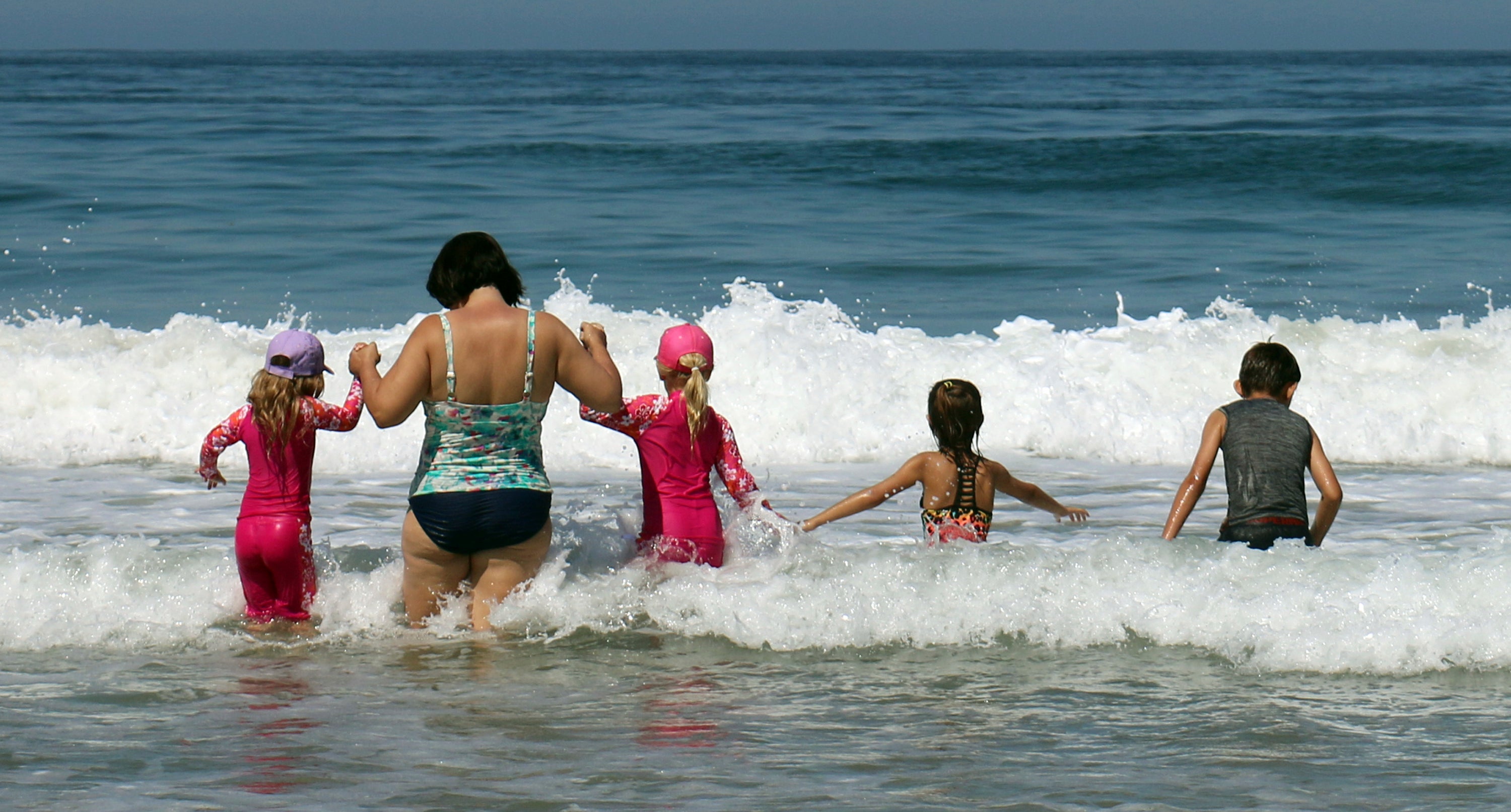Southern California hit by record-breaking heat wave
LOS ANGELES (AP) — Southern California sizzled Friday in record-breaking heat from the desert to the sea, with widespread triple-digit highs and withering conditions that stoked wildfires. Officials urged people to take advantage of cooling centers in libraries and other facilities and to watch out for the elderly and very young, warning that minor heat-related illnesses can worsen quickly. Sidewalks and outdoor lunch tables were left to the blazing sun. “There are no people,” said Gloria Aguilar, 37, a food vendor in the Los Angeles piñata district. “Because it’s too hot, and they want to stay inside the house. We sell more water than the food.” Firefighters worked in extreme temperatures as they battled outbreaks of wildfires, including a destructive blaze in the San Diego County community of Alpine and another that spread from a truck fire on Interstate 15 in Cajon Pass east of Los Angeles. Torrid conditions were expected to last through Saturday before easing a bit Sunday. The heat was being produced by a “humongous” dome of high pressure that was also spreading oppressive conditions into parts of Arizona, Nevada and Utah, the National Weather Service said. “Today will be one for the record books,” the Los Angeles region weather office said before sunrise — and within a few hours records began to fall. In downtown Los Angeles, the mercury hit 108, topping the previous July 6 record of 94 set in 1992. LA’s Woodland Hills neighborhood hit 117 degrees, smashing the previous record of 106 that was set in 1976. Several suburbs also recorded new highs for the day, as did coastal Camarillo and Oxnard in Ventura County with 101 and 95, respectively. In San Diego County, eight cities broke records including San Diego, which notched 93 degrees, breaking a high of 84 that was set in 1936. It was 109 in Alpine, where a wildfire destroyed at least five and perhaps a dozen or more homes. Southeast of Los Angeles in Orange County, Los Alamitos Race Course canceled daytime racing after two races because of the heat. The offshore flow of air pushing back the normal moderating influence of the Pacific Ocean had produced startling early morning temperatures: At 3 a.m., it was 98 degrees (36.6 Celsius) in Gaviota on the Santa Barbara County coast about 125 miles west of Los Angeles, the weather service said. While beaches offered relief from the furnace-like conditions, forecasters warned that a lingering south swell from former Hurricane Fabio would continue to combine with a local northwest swell to produce dangerous rip currents and the possibility of sneaker waves. Residents toughing it out in the valleys around Los Angeles and in the inland region to the east faced the possibility of unhealthy air quality. Air pollution regulators said the conditions were likely to produce an atmospheric inversion that would increase ground-level ozone, which is linked to a host of respiratory troubles ranging from trouble breathing to asthma attacks. The highest fire danger stretched from Los Angeles County westward into several counties up the coast where a north wind added another element to the mix of hot, dry air and parched vegetation. Elsewhere, the fire risk was characterized as elevated. An additional threat was likely to develop by Sunday with the arrival of seasonal monsoonal moisture and the possibility of thunderstorms. “Any lighting strike is going to be a concern,” said Alex Tardy, a meteorologist with National Weather Service in San Diego. AP writer Ariel Tu contributed to this report.
